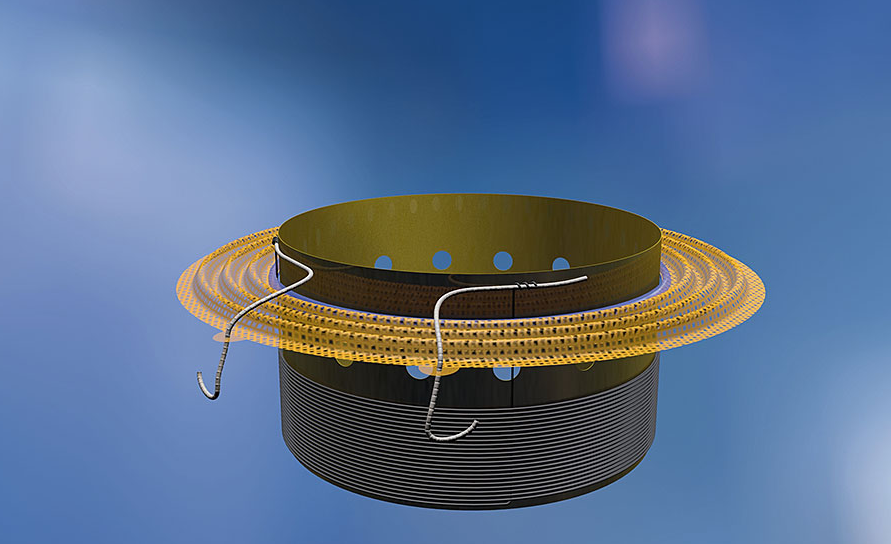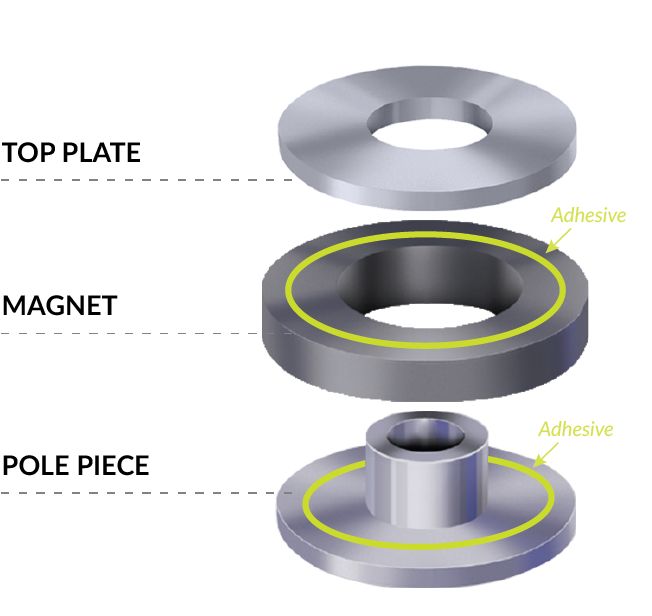
Adhesive bond the Spider to the Voice Coil, also known as the Bobbin.
Solutions: MXbon Rubber toughened CA, Dymax, 3M
In speaker fabrication operations, adhesives play an important role and the potential solution they offer for increasing productivity has yet to be fully realized. A typical loudspeaker is bonded in at least seven places. Using the right adhesive helps manufacturers create a high-quality and reliable product.
Adhesive Requirements
While high strength and good sealing performance are usually among the most important properties of adhesives, the sound quality affected by the adhesives also has to be considered. The quality of sound can be improved by adjusting the flexibility of adhesives in a way to provide optimal vibration damping, especially for the speaker’s movable parts. Both flexibility and strength are needed to protect speakers from damage caused by impact, shock or strong vibrations. Since components need to withstand variations in temperature, vibration and humidity, it is also important that the adhesive properties do not degrade during aging.
Spider to Voice Coil bonding solutions
This bond connects the spider to the voice coil, also known as the bobbin, which is usually made of paper or a polyimide-coated fabric with wires wrapped around it. The spider is responsible for keeping the voice coil moving up and down in the center of the magnetic gap, causing the membrane to vibrate and create sound waves.
Cyanoacrylates ( Known as CA or Instant adhesive) are still widely used for this application. Fast curing properties of the adhesive can archive the strong bond in short time and can meet high productivity demands. Rubber toughened Modified CA adhesive provide the flexibility to the bond. Some of the manufacturers of rubber toughened modified CA Adhesives are MXBon, 3M, Henkel, to name only a few.
High performance gasket & solvent based adhesives cure with the evaporation of the material solvent. These adhesives provide flexible bond between the voice coil and the spider. Some speaker manufacturers also apply reinforced materials into the bond area to ensure the durability of the bond. There are some solvent based adhesives manufacturers such as 3M, Henkel among others.
Speaker manufacturers could significantly increase production efficiency by using UV- and light-curing acrylates. These adhesives cure in just a few seconds when exposed to high-energy light. In the case of the spider, the highly absorbent polycotton material makes this process more difficult, but by using high-intensity spot lamps, intense light can penetrate through the fabric, allowing the adhesive to achieve its final strength within 10 seconds. In addition, specially developed acrylates provide thermal stability up to 150 C. Such temperatures arise from energizing the voice coil and are too great an obstacle for many standard adhesives and cyanoacrylates to overcome.
Loudspeakers are manufactured in an established and elaborate production process. However, optimization is still possible, especially by using UV acrylates. The properties of these adhesives can be adjusted to meet acoustic requirements, and the addition of fluorescence can facilitate inline inspection for quality control. With light-curing adhesives, manufacturers can significantly increase production efficiency and provide a competitive advantage.




